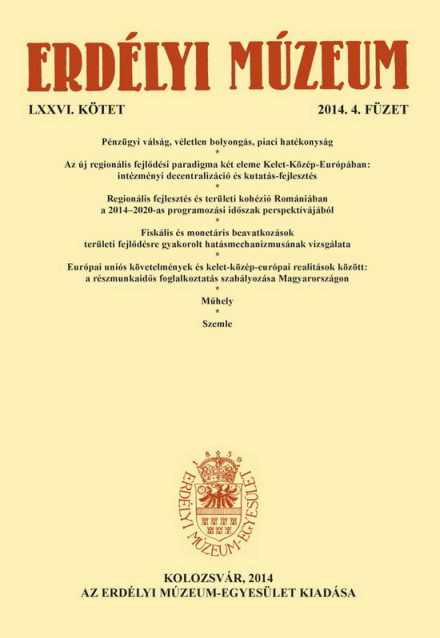A modern magyar nagyvárosok kialakulásának és fejlődésének alapkérdései a dualizmus kori magyar tudományos irodalomban
Fundamentals of the Establishment and Development of Modern Hungarian Cities and their Analyses in the Hungarian Scientific Literature in Dualism
Author(s): Zoltán HajdúSubject(s): History
Published by: Erdélyi Múzeum-Egyesület
Keywords: modern hungarian cities; dualism
Summary/Abstract: The era of dualism (1867-1918) was one of the most complex time periods in the common history of Austria and Hungary (Austro-Hungarian Monarchy) as well as in the history of nationalities living in the multiethnic Hungarian state at that time. In this era, political, economical, social, ethnic-nationalistic and other issues, furthermore processes of modernization affecting almost all substructures of the above entities intertwined and created real turbulence. All of these factors had a significant and synergetic role in the transformation of the settlement network, particularly the group and network of cities. Urbanisation, both in terms of the growing number of cities as well as the modernization of the inner infrastructures of larger cities, appeared as a major focal point of these changes. Budapest, the capital city was the only city in the country which was considered to be a metropolis according to period standards in Europe, and which had a truly unique development process. By Hungarian standards, “large cities” were those which had a population of over 30,000 inhabitants (specified by law in 1848), yet obviously this was a more complex issue concerning social, economical and functional matters as well. The rapid growth of urban population was one of the most influential social, economical, political and settlement processes. Between 1869 and 1910 the urban population almost doubled, while the number of people living in villages increased by 26% only. The population of larger cities grew the most intensively, and there were demographically stagnant cities as well. The rapid, dominant, extensive development of Budapest at the era of dualism was a topic of diverse scientific literature at the time, covering its political, administrative, social and architectural aspects. In the 1890s, when the rural Hungarian elite acknowledged that Budapest had become comparable to Vienna and it was capable of further development on its own, comprehensive analyses began to focus on the development of larger rural cities as well (earlier studies in this field targeted individual cities only). Essentially, the modern Hungarian science was born in the era of dualism. Related to the process of urbanization, geography, sociology, city administration and other fields of science were developing in this time period, and their respective scientific journals were launched, too. Science, scientific literature and the development of cities mutually strengthened each other.
Journal: Erdélyi Múzeum
- Issue Year: LXXVI/2014
- Issue No: 4
- Page Range: 255-271
- Page Count: 17

